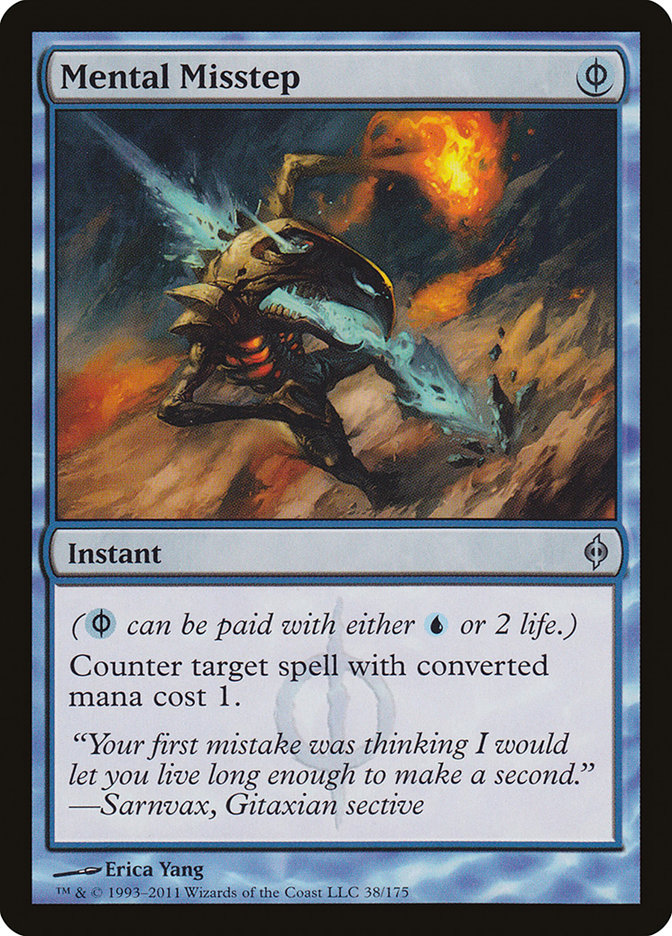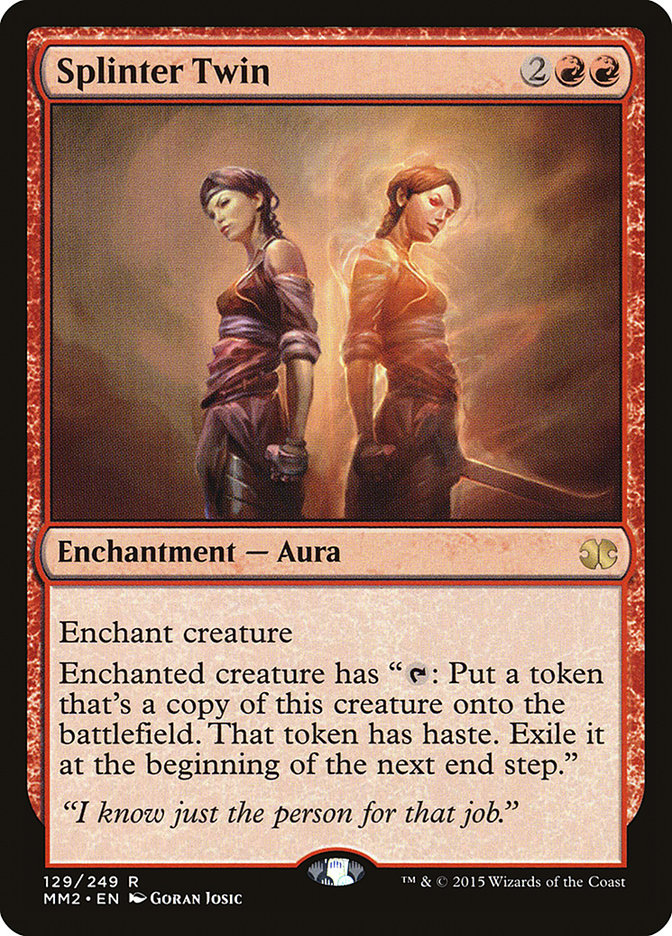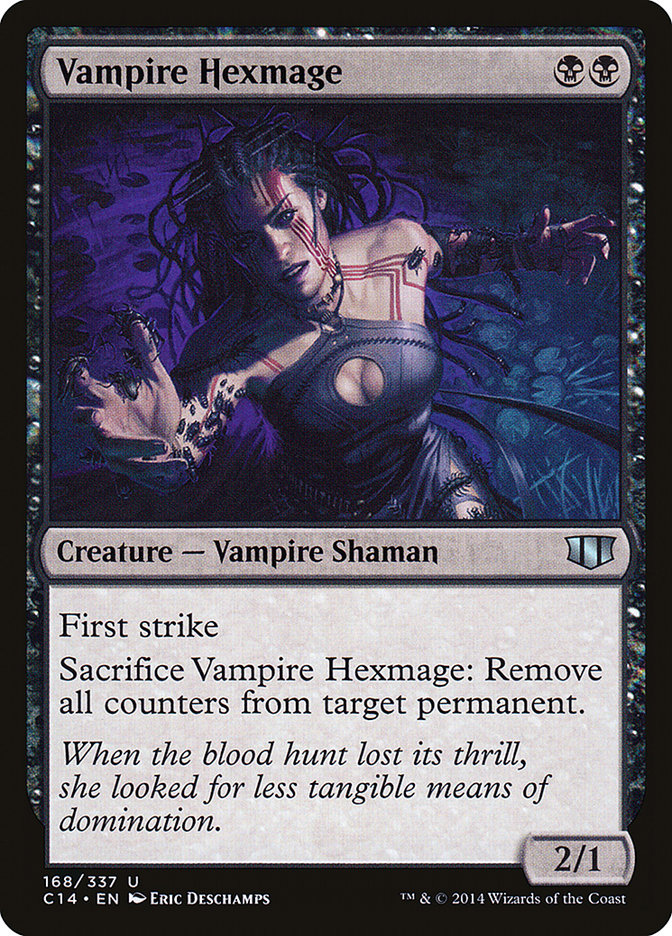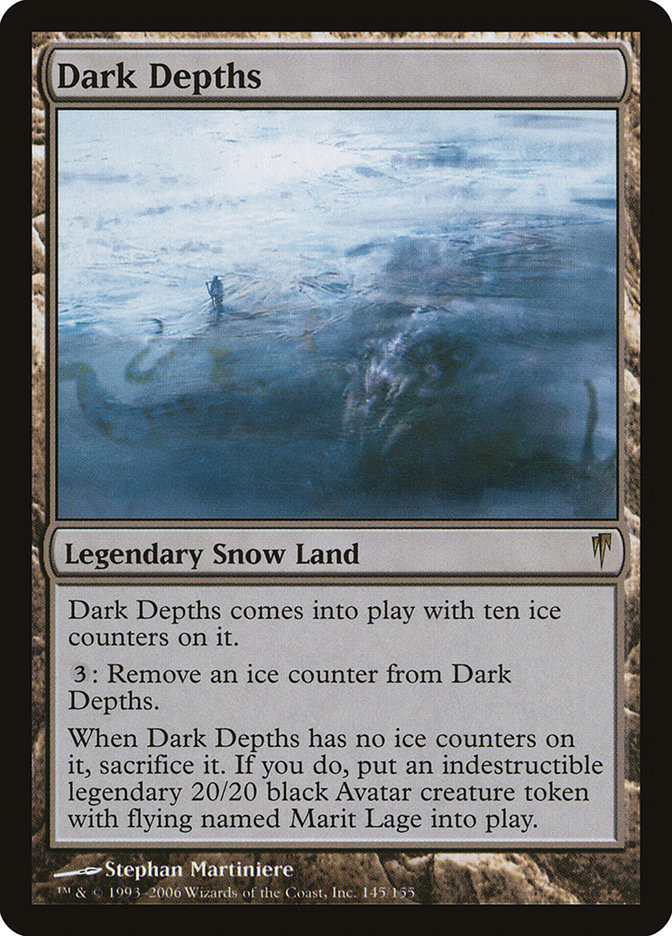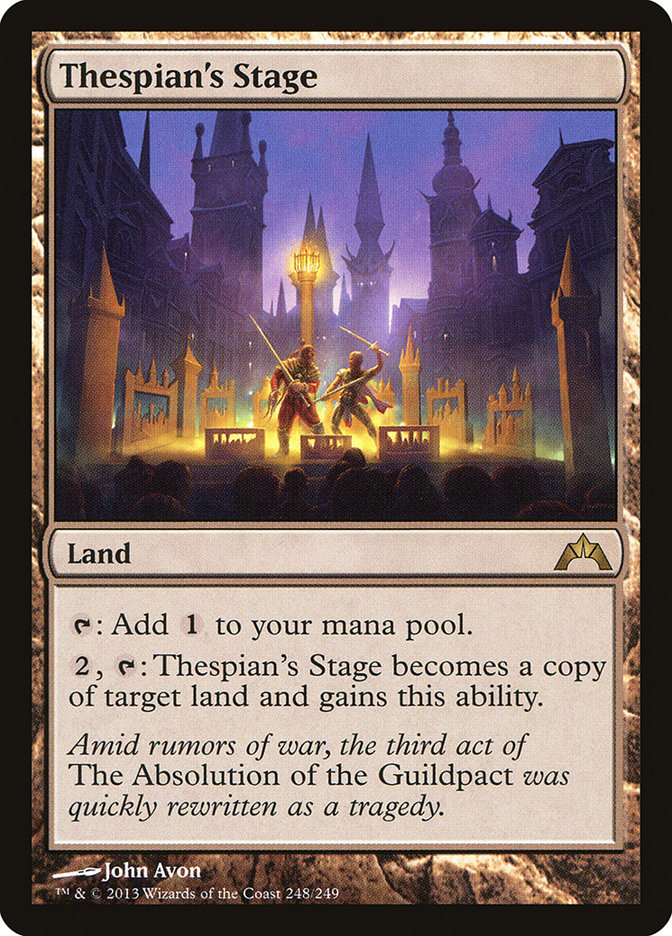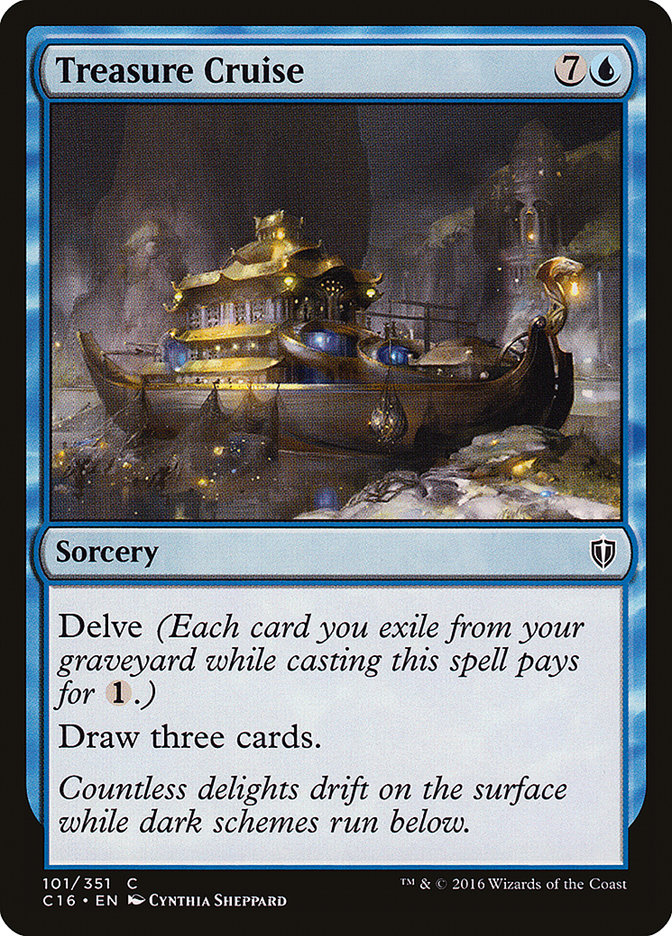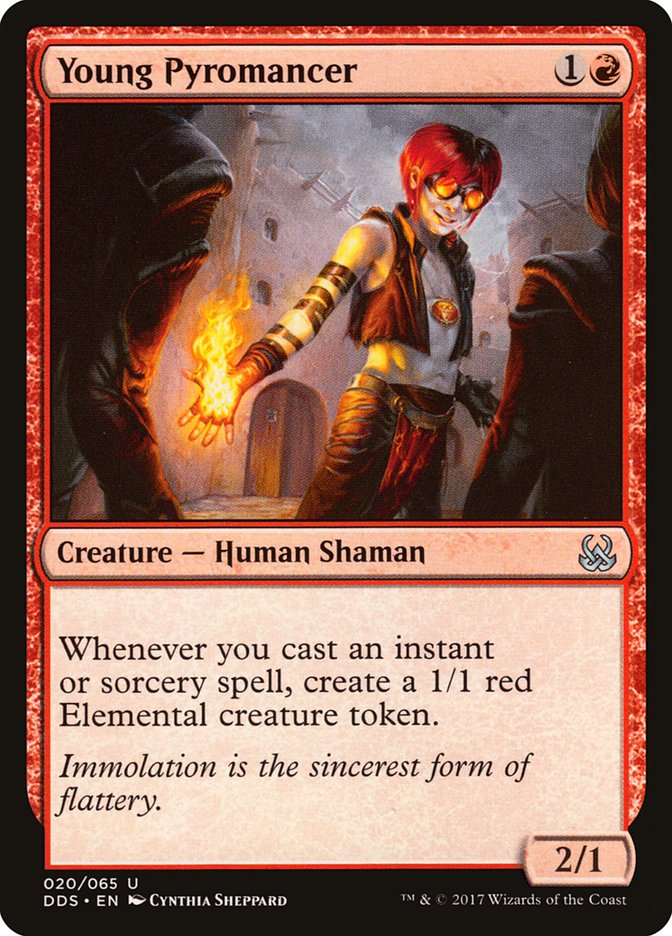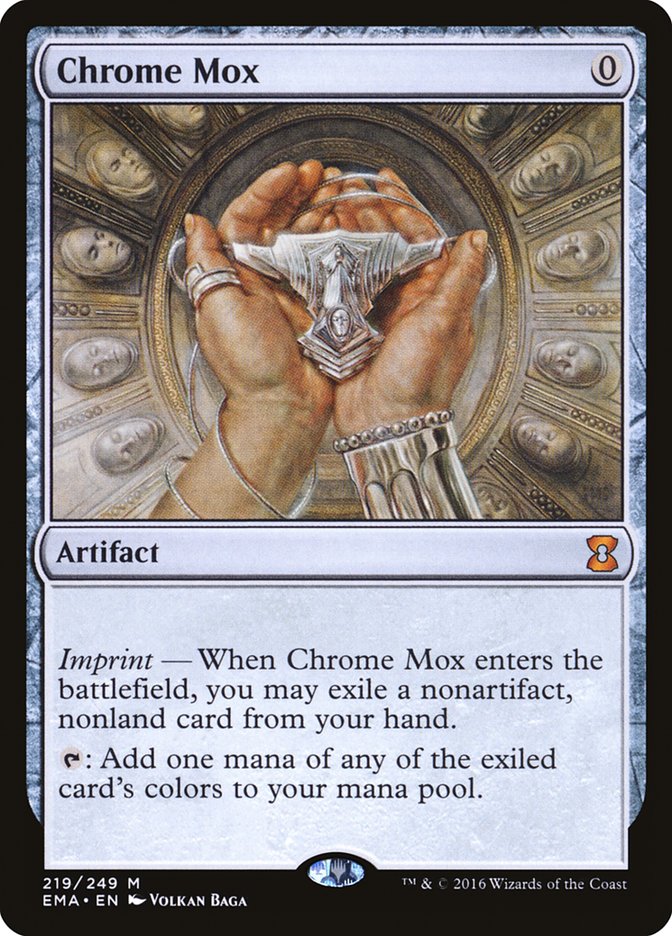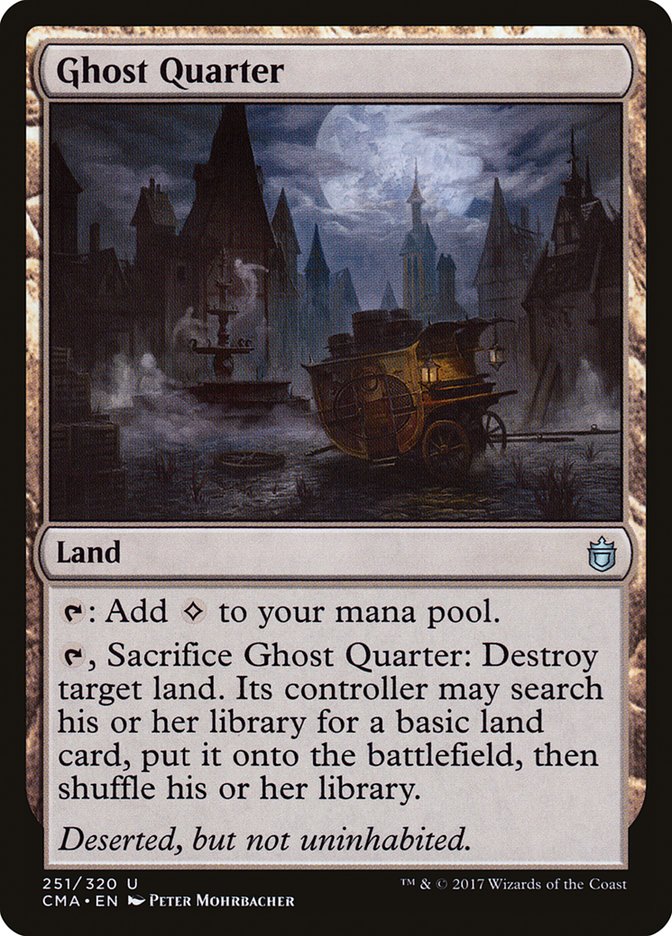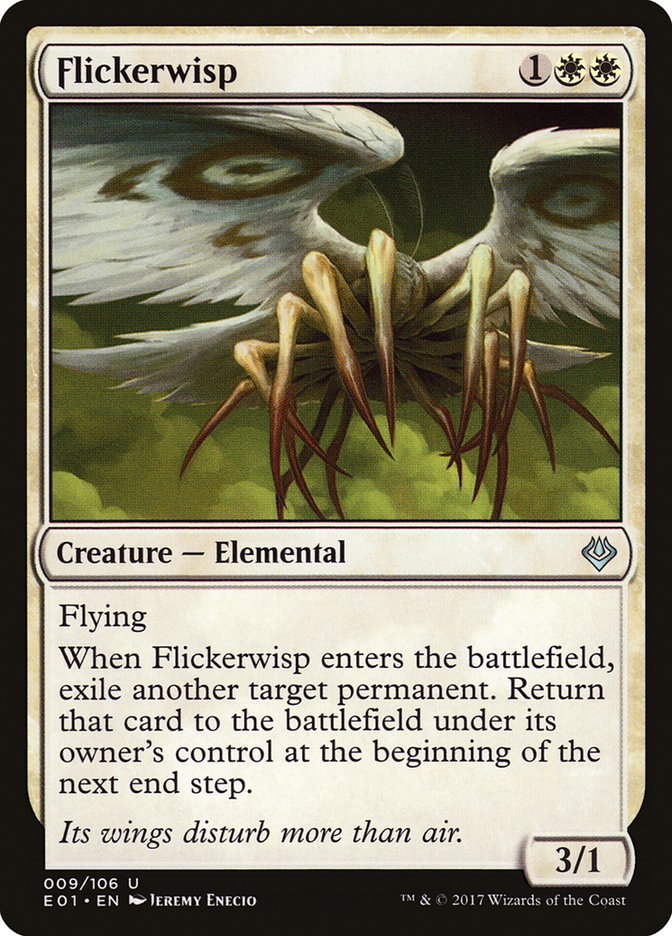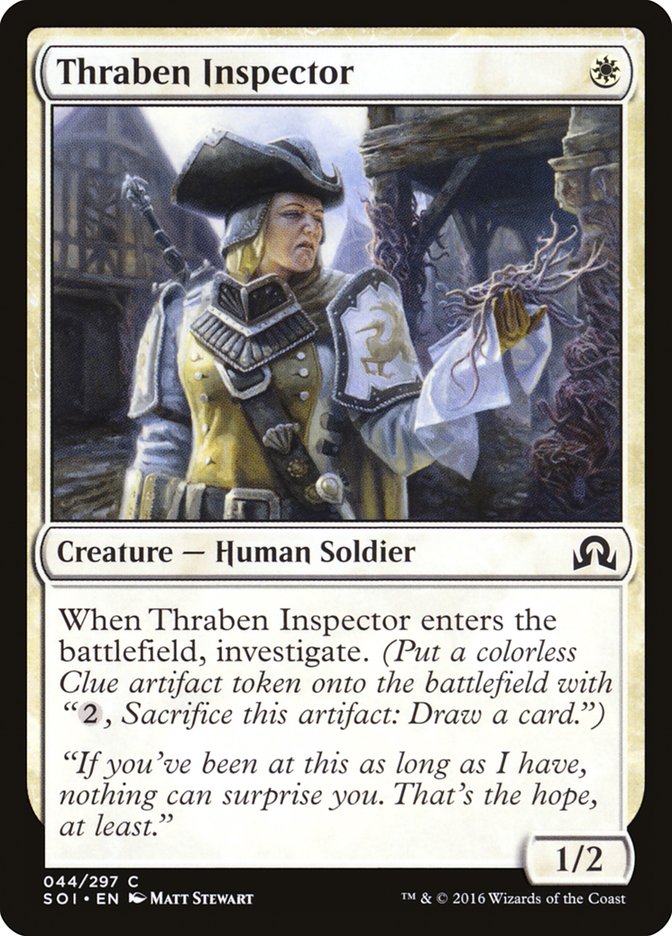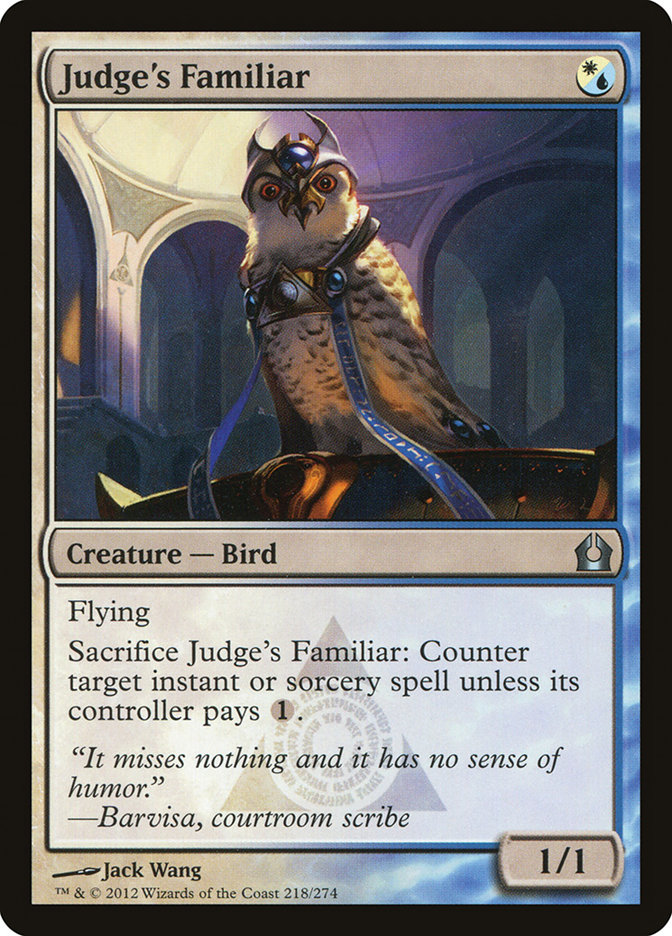SCG CON is this weekend and with it comes the first major event for
No-Banned List Modern. In anticipation of this, we at the Versus Series
have been regularly testing out the format, trying to see which powerful
cards from Magic’s past stand the test of time and which should be tossed
in the dustbin of history.
Over the course of these sessions and the brewing of decks that goes into
them I’ve gained some insights into the format so if you’re not qualified
for the Invitational or Day 1 doesn’t go as planned, here’s what you need
to know before what should be the strangest but most exploitable Opens
ever.
It’s Going to be Degenerate
Modern is often lamented as a format dominated by various linear decks that
are ostensibly different but all aim to end the game quickly with little
interaction. The format is big enough that lots of linear decks exist, but
it doesn’t have the same quality of disruption as Legacy, notably missing
the free counterspells Force of Will and Daze, nor does it have the quality
of card selection of Brainstorm and Ponder necessary for fair decks to
consistently find the right narrow answers for the matchup they are facing.
Taking away the Banned List helps a bit on both those fronts, freeing
Ponder, Preordain, Treasure Cruise, and Dig Through Time for better card
selection and Mental Misstep as a free counterspell. But with those comes a
host of new linear decks enabled by Dark Depths, Dread Return,
Hypergenesis, Eye of Ugin, etc. Mental Misstep, while very good, won’t be
enough to hold off all hese new enemies of interaction.
I’m looking at this Open as comparable to Pro Tour Philadelphia in 2011.
That event was meant to be Extended, a format that was completely broken by
the printing of Sword of Feast and Famine and Batterskull, which unleashed
Caw Blade into the world. A mere three weeks before the tournament, a
change to the newly invented Modern format was announced. The original
Banned List was meant to cover the most degenerate combo decks available in
the format, but unsurprisingly a few cards slipped through the cracks and
the tournament ended up with the nickname Pro Tour Goldfish.
Turn three kills were commonplace, and breaking serve with a turn two kill
on the draw was the way to steal a match win. That kind of speed is about
where No Banned List Modern is. Elves, Hypergenesis, Dredge, and Storm all
kill on turn three with a good draw and turn two with a great one. If you
want to play that game you need to be on that pace, which is why I prefer
Affinity decks built around Atog and am not a fan of slower combo decks
like Eggs that often want to wait until turn four to utilize Lotus Bloom.
There will be a place for these decks if and when the format evolves,
players figure out how to best combat the unfair decks, and things slow
down, but this is week one, and week one means you need to be fast.
My Affinity deck at Pro Tour Philadelphia contained Tezzeret, Agent of
Bolas. I won a single match.
This principle should also inform how you build fair decks. If you want to
play a pile of cantrips and Treasure Cruise, you better be ending the game
quickly because these combo decks are also resilient, especially those that
play cantrips. I’d say you want to be ending the game by around turn five
to effectively limit your combo opponents from rebuilding. Prioritize hands
that have a clock in addition to some disruption.
Eldrazi and Splinter Twin Are the Fun Police
I’m not sure anyone would categorize these decks as “fair,” but they aren’t
as obviously degenerate as the other combo decks and aren’t quite as fast.
But they both gain something quite valuable in exchange for slowing down a
turn: excellent disruption. Eldrazi has Thought-Knot Seer and Chalice of
the Void, the latter being among the best cards in the format. Splinter
Twin gets to play all the best blue counterspells and can use its creatures
to stall a Marit Lage token for a turn or two.
Both decks are good against degenerate strategies and they’re very
consistent. They also end the game around turn four or five, which is
enough to limit the recovery time for linear decks.
If you’re looking for a last-minute deck choice, I’d go with one of these
two because they’re my favorites for taking the trophy. Between the two,
I’d give the edge to Eldrazi in large part because that deck is so easy to
build. You can take the colorless list from Pro Tour Oath of the Gatewatch
and you’re at least 80 percent of the way there. For Splinter Twin, a deck
with Dig Through Time, singleton slots matter a lot and getting those right
in a wide-open field with virtually no previous data to go on is a tough
ask. But if you get close enough then you’ll be in great shape. It’s no
surprise that Splinter Twin won Pro Tour Philadelphia.
Dark Depths is Very Good
I’ve been consistently impressed by Dark Depths, whether its paired with
Thespian’s Stage, Vampire Hexmage, or both. Either combo dodges Mental
Misstep, and Path to Exile isn’t that common in the format because
Stoneforge Mystic is so slow. The combo doesn’t take up much space since
most of the pieces are lands, so it’s easy to fit plenty of disruption and
card selection so you can beat anything.
I’d have Dark Depths in the category of tournament favorites with Splinter
Twin and Eldrazi if I had any idea what the best version of the deck is.
You can go G/B and turbo out the combo with discard and Life from the Loam
to back it up. I also tried out a B/W Smallpox deck that has a robust fair
back-up plan, and I’m intrigued by Ari Lax’s B/U list with Counterbalance
and Sensei’s Divining Top.
Maybe the combo is good enough that any of these lists can win. I wouldn’t
be surprised if that’s how things play out, especially if players are too
busy putzing around with their Lightning Bolts and Gut Shots and forget to
prepare for a 20/20 flying indestructible Gerry Thompson on turn two. Don’t
be that person. Bring your Ghost Quarters, Sorcerous Spyglasses, and bounce
spells because Gerry will not be forgiving.
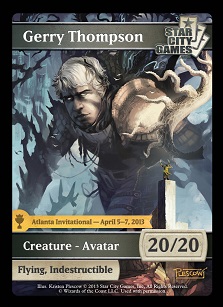
U/R Delver Will Be Popular But Underperform
How have I gotten so far into this article and not mentioned the most
obvious deck in the format? Treasure Cruise and cheap cantrips is a proven
core that can be supplemented by almost anything you want. I expect we’ll
see Lightning Bolt and Young Pyromancer at the top of the list. The deck is
reasonably inexpensive for those unwilling to go all-in on a deck for the
fledgling format and should be powerful enough to get some wins.
We’ve certainly played our fair share with it on the Versus Series, but
every time we do, I come away disappointed. It’s just so hard to prepare
for everything, and U/R Delver isn’t quite powerful enough to overwhelm its
opponents, so you do have to interact. Any matchup where Mental Misstep and
Lightning Bolts are misses is going to be tough and you don’t have a lot of
space to include answers to larger creatures, swarms of small creatures,
Chalice of the Void, Dark Depths, and everything else this format will
throw at you.
I expect U/R Delver to be the most popular deck in the tournament and with
an incredibly low fail rate I expect one copy in the top 8, but eventually
it’s going to run into enough well-built combo decks or threats it wasn’t
prepared for and flame out. Once the format settles and you have a better
idea of which decks worked and which decks didn’t, U/R Delver will be a
top-flight deck because of how consistent it is, but in week one raw power
is relatively more valuable than consistency.
Chrome Mox is the Key to Fighting Fair
I don’t normally think fair when I hear the word Mox, and Chrome Mox will
find its way into plenty of linear decks, but its best home has always been
as a way for fair decks to jump the curve and land a threat on turn one and
immediately have their opponent on the back foot.
This format is going to be fast, and with speed comes games ending when
both players have cards left in their hand. The card disadvantage from
Chrome Mox is well worth the mana acceleration, and I would be shocked if
it’s not one of the best cards in the format. There are so many good
two-drops to cast on turn one, from Dark Confidant to Counterbalance to
Stoneforge Mystic that if cast on turn two can often leave you vulnerable
to an early kill. Landing these threats also lets you dodge a turn one
Mental Misstep, while your own Mental Misstep can be used to protect it,
gaining a huge edge in early sequencing.
Of course, playing fair still means we must be proactive, so here’s a sneak
preview from this week’s Versus Series, a deck that I think has a lot of
potential due to the power of Chrome Mox:
Creatures (25)
- 4 Flickerwisp
- 4 Stoneforge Mystic
- 4 Leonin Arbiter
- 4 Thalia, Guardian of Thraben
- 2 Spirit of the Labyrinth
- 3 Vryn Wingmare
- 2 Thraben Inspector
- 2 Thalia, Heretic Cathar
Lands (9)
Spells (26)

Thalia, Guardian of Thraben is an incredible turn one play, often
completely blanking your opponent’s turn one, and this list has several
ways to compound that advantage. Vryn Wingmare doubles up the tax effect so
they still can’t cast that Lightning Bolt, Ponder, or Thoughtseize. Thalia,
Heretic Cathar will likely cause their next land to enter the battlefield
tapped so they can’t cast a spell, and Leonin Arbiter plus Ghost Quarter
puts them back to square one.
With the land light manabases that are common in the format, this deck is
going to end plenty of games before they begin, while Stoneforge Mystic and
Flickerwisp give it some staying power if things don’t go to plan in the
early game.
Also, unlike a lot of anti-combo decks, this list has plenty of interaction
for Dark Depths, and doesn’t even need to shoehorn awkward cards to do so.
Ghost Quarter, Path to Exile, and Flickerwisp all do the job, though
sometimes you’ll need your Flickerwisp at instant speed with Aether Vial.
Importantly, your opponents will be incentivized to make their Marit Lage
on their main phase to play around Ghost Quarter, so even a hard cast
Flickerwisp puts them in a pick your poison scenario.
I have three issues with that list as currently constructed. First is the
Chalice of the Voids in the sideboard are unnecessary when the maindeck is
so heavily geared towards beating fast combo. I want more cards against
Eldrazi which will be a problematic matchup. Painter’s Servant is the first
card I’d try. Both Eye of Ugin and Eldrazi Temple specify that they only
work for colorless Eldrazi creatures, so Painter’s Servant giving them a
color shuts down their mana engine. Landing it on turn one and backing it
up with Ghost Quarter and Leonin Arbiter is a coherent plan that fits with
what the deck naturally wants to do.
Second, I’m concerned that the deck is mana heavy. Nineteen lands, four
Aether Vial, and four Chrome Mox is a lot, but you need enough natural
white mana to function. I wouldn’t want to cut more than one land for that
reason, so I’d start with maxing out on Horizon Canopy and maybe adding a
single Field of Ruin to get more value out of the manabase.
And third, I’m concerned with mini-sweepers like Forked Bolt, Electrickery,
and Golgari Charm, which I expect to be popular as counter-measures to
Young Pyromancer and Elves. This deck has thirteen creatures with one
toughness, so these cards can completely undo all your hard work. Burrenton
Forge-Tender helps against the most popular of them so a third copy in the
sideboard may be necessary, but the answer may be unintuitively swapping
out Thraben Inspector for one toughness but two-time Pro Tour Champion
Judge’s Familiar.
With so many ways to tax their mana, resolving a two-mana spell through a
Judge’s Familiar is far from easy, and if you keep them off it long enough
it may not be enough to stabilize the battlefield. Familiarity certainly
plays well with what the deck is doing, and additional fliers are welcome
with equipment. I’ve long been a champion of the oft-underestimated Bird
and in a format defined by a plethora of one mana spells and winning early
exchanges, it’s just a good card.
I’m playing the Invitational which is Standard and Modern and yet I find my
mind constantly wandering to No Banned List Modern because the format is so
ripe for exploration. I’ll be paying very close attention to the results of
the event, and I’m hoping SCG is encouraged enough by the attendance to
make the format a regular appearance on the SCG Tour. A high-power level
and the presence of many linear strategies isn’t a death knell for a
format, and I see the format having the potential to be as tactically
complex as Legacy without the huge cost barrier.
Let’s hope I’m right.


